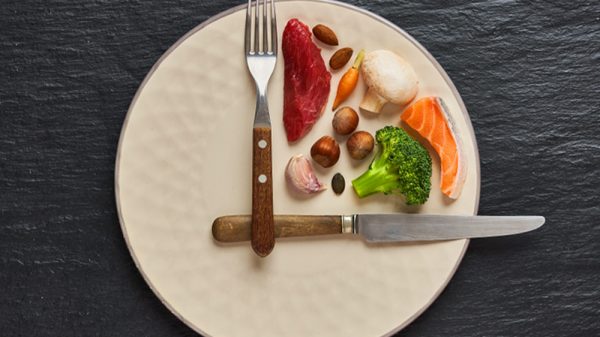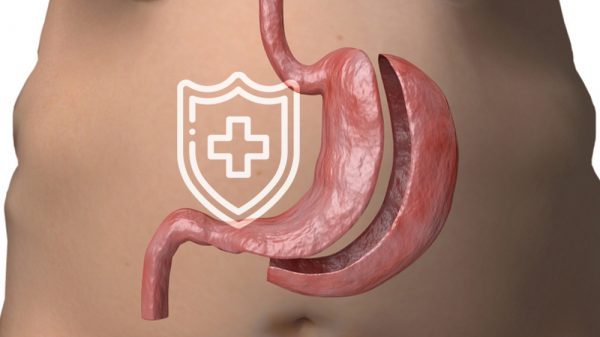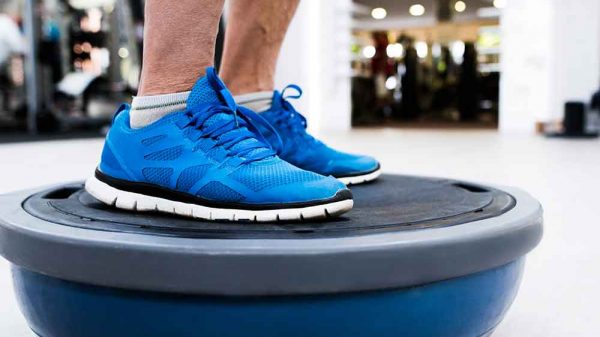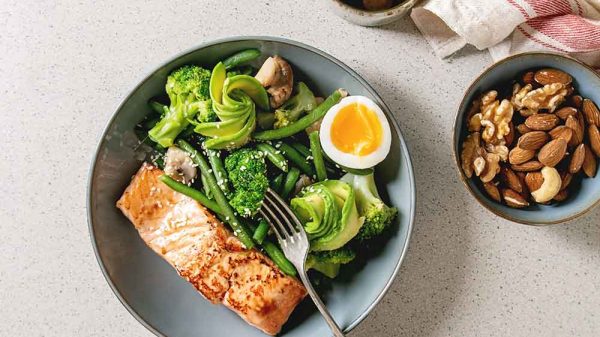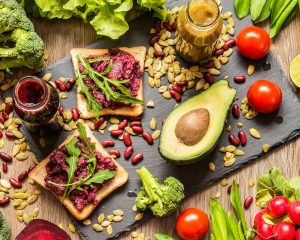“Cutting carbs” has become a hallmark phrase of dieters everywhere. But what does it mean to cut carbs, and is it actually good for you? Here we dig into the origins of the low-carb diet. Keep reading to find out how to cut carbs to support the reversal of fatty liver disease and associated conditions.
The Low-Carb Diet: What’s Its Premise?
The low-carb diet rose to popularity in the Western world after it was studied as a potential treatment for epilepsy in the early 1900s. Several kinds of low-carb diets have since surfaced, including the Atkins Diet and South Beach Diet. All low-carb diets are based on cutting back on food sources that provide carbohydrates.
What is sometimes overlooked is that by restricting carbohydrates, we have cut out a major food source of calories in our diet. An increase in fat usually fills this caloric void, so by nature, low-carb diets tend to also be high in fat. (1)
Carbohydrates are the fastest-digesting macronutrient and provide the most readily available energy. In a nutshell, the idea is that by cutting out immediate energy sources, the body will be forced to use its own energy stores (body fat) to supply energy. This, in turn, leads to fat burning for energy, and subsequent weight loss.
What Does Science Say?
Science tends to be inconclusive when it comes to the benefits of a low-carb diet for preventing and reversing disease. (1)
For example, let’s consider the Okinawa people living in Japan. Historically, the Okinawa people have the longest lifespan of any population in the world, yet their diet consists primarily of carbohydrates. Estimates show that a whopping 85% of the Okinawa diet comes from carbohydrates! (2)
However, nearly 15 years later, diet shifts towards higher meat and fat among the Okinawa people were associated with declining life spans. (3)
Based on this research, how is it then possible, to blanketly suggest that a low-carb diet promotes optimal health?
Another population that follows a high-carbohydrate is the South American Tsimane people who reside in Bolivia. Like the Okinawa people in 1988, the Tsimane people consumed a diet that was majority (72%) carbohydrates, with the remaining 28% being an equal blend of fat and protein. Shockingly, the Tsimane people exhibited the lowest rates of coronary artery disease ever recorded in a population. (4)
Research on Low-Carb for Fatty Liver
Let’s take a look at the research specifically analyzing metabolic syndrome and fatty liver disease. Some research suggests that low-carb diets may be more effective for short term weight loss, but not as effective in the long term. Researchers also suggest that carbohydrate quality is more important than quantity. (5)
An analysis conducted at the Department of Medicine at the University of Helsinki and the Minerva Foundation Institute for Medical Research in Helsinki, Finland, concluded that a low-calorie diet leading to weight loss is effective for reducing fat content in the liver in the long term, regardless of the proportion of carbohydrates. (5)
A study published in the European Journal of Nutrition concluded that it’s difficult to ascertain whether the initial positive impacts of the low-carb diet are due to caloric restriction or the low-carbohydrate nature. (1)
Plus, a wealth of research demonstrates the role of whole grains in helping to reverse indicators of metabolic syndrome. Whole grains have been associated with better cholesterol levels, improved insulin function, and decreased risk of heart disease. A study published in the Journal of International Endocrinology analyzed numerous studies and suggested that consuming whole grains may protect against the development of fatty liver disease and also play a role in reversing it. (6)
Overall, the evidence is somewhat inconclusive and doesn’t suggest that a low-carb diet is more effective than a healthy diet that includes unrefined carbs. Studies generally do not assess the quality of carbohydrates consumed. In scanning the scientific literature, there doesn’t appear to be a study directly comparing a low-carb diet with an equicaloric diet that allows for carbohydrates derived from whole foods.
Carb Quality Is the Critical Factor
So, what explains this discrepancy here? If carbs are so bad, then why are populations that subsist on a high-carb diet seeing such excellent health outcomes? Why is the research inconclusive regarding the superiority of the low-carb diet for fatty liver disease? It boils down to the quality of the carbohydrates, not all carbohydrates in general.
The composition of carbohydrates consumed is the defining factor in liver-friendly diets. Additionally, the efficacy of the low-carb diet in the Western world may be due largely to the fact that eating fewer processed foods and grains removes massive amounts of sugars and calories from the diet.
Carbs from Processed Foods vs. Carbs from Whole Foods
The body handles the carbs in whole foods like vegetables, fruits, and whole grains in a vastly different way than the carbs present in processed foods and refined grains.
What Happens When We Eat Carbs from Processed Foods
Processed foods refer to any food source that has been packaged or manufactured – such as granola bars, chips, cookies, candy, and cake – and almost always contain high amounts of added sugars. Refined grains are grains that have been stripped of their health-promoting agents like fiber, antioxidants, vitamins, minerals, and protein. Examples of refined grains are white bread, white pasta, and white rice. These carbs are the bad kind of carbs and are also referred to as simple carbs.
When we eat added sugars and refined grains, the body is able to rapidly break down carbohydrate molecules into smaller, absorbable sugar molecules called glucose. Because processed foods and refined grains usually lack nutritional value besides starch, they are readily broken down into glucose. The glucose molecules then immediately enter the bloodstream all at once, causing a surge in blood sugar levels. These blood sugar spikes trigger the pancreas to release insulin, which signals to your cells to utilize the glucose present in the bloodstream. Excessive and long-term consumption of simple carbs contributes to insulin resistance, type 2 diabetes, and fatty liver disease. Because of the quick blood sugar spike after ingestion, these foods have a high-glycemic-index.
What Happens When We Eat Carbs from Whole Foods
The carbohydrates in whole foods are always paired with fiber, vitamins, minerals, and antioxidants. The dietary fiber present in fruits, veggies, whole grains, and beans slows down the digestive process that converts carbohydrate molecules into glucose molecules. A steady stream of glucose enters your bloodstream, without causing a spike and crash. These foods work against metabolic syndrome and help to improve insulin function and decrease fat accumulation in the liver. Your body’s regulated glucose response means that these foods have a low-glycemic index. These carbs are the good carbs and are also referred to as complex carbs.
For example, the Okinawa people and Tsimane people didn’t eat carbohydrates from cookies, crackers, pasta, and white bread to fulfill their calories from carbs. Instead, the Tsimane people filled up on unrefined corn, plantain, rice, nuts, and fruits. The Okinawa people got their carbs from purple sweet potatoes, rice, beans, and green veggies.
We Need Carbohydrates
Aside from the scientific evidence that doesn’t support the superiority of the low-carb diet, the human body actually requires carbohydrates for optimal function. The body breaks down carbohydrates into glucose which powers the metabolic processes of the mitochondria in cells. Glucose molecules are the raw materials for the synthesis of cellular energy. Mitochondria utilize glucose to produce adenosine triphosphate (ATP), the energy that fuels all of our body’s functions.
For a visual image that demonstrates the importance of glucose, let’s think about the positron emission tomography (PET) scans are medical diagnostic images that provide information about how effectively our organs are functioning. PET scans use radioactive labels to reveal metabolically active tissues, i.e., where glucose utilization is the highest. On a PET scan of the healthy human brain, the image would light up in fluorescent red, yellow, and blue. Our brain cells are teeming with ATP factories that require glucose as a starting product.
Based on the fact that glucose is a biologically essential macronutrient, severe carb restriction or a zero-carb diet is counterintuitive and unsupportive of optimal health.
What happens if you restrict carbohydrates too much? You will likely feel fatigued and low-energy. Your digestive system may also suffer since whole grains, fruits, veggies, and legumes are the richest sources of dietary fiber.
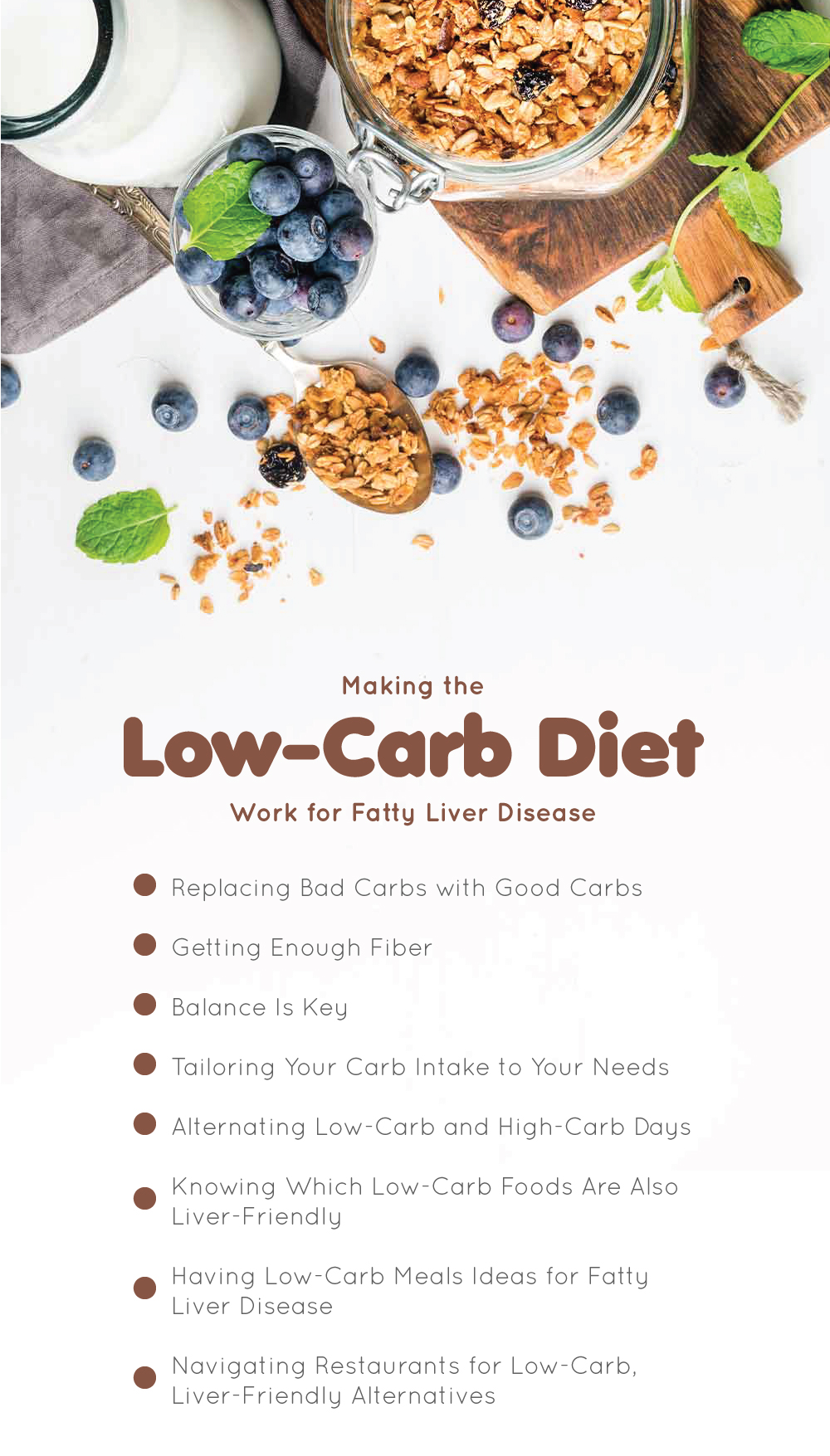
Making the Low-Carb Diet Work for Fatty Liver Disease
The hype that has surrounded the low-carb diet for decades has essentially demonized the carbohydrate and instilled an irrational fear of carbs. Though originally formulated to help people lose weight and get healthy, low-carb dieting has led to avoiding healthy carbs and additional benefits from fruits, veggies, whole grains, and legumes.
The secret to following a healthy low-carb diet is to limit the bad carbs, not all carbs in general.
In order to follow a “low-carb” diet for optimal health, shift the meaning of low-carb to reflect a diet low in refined carbohydrates. Then, you can choose to limit the proportion of carbohydrates in your diet if it works for your body and lifestyle.
1. Replacing Bad Carbs with Good Carbs
The first step in adopting a low-carb diet for fatty liver disease is to swap out any bad carbs for good carbs. This will make sure that the carbs you eat also provide necessary nutrients like fiber, minerals, vitamins, and antioxidants.
Examples of bad carbs include granola bars, cereal bars, breakfast cereals, white bread, white pasta, white rice, crackers, chips, cookies, cakes, ice cream, doughnuts, and sugary drinks.
When choosing good carbs, keep in mind the traditional Okinawan and Tsimane diets! Good carbs include fruits, starchy vegetables, beans, and whole grains. Examples of good carbs include apples, bananas, melon, mango, kiwis, oranges, sweet potatoes, beets, squash, pumpkin, broccoli, cauliflower, brown rice, quinoa, millet, whole-wheat pasta, and oats.
2. Getting Enough Fiber
When you swap out the bad carbs for good carbs, you will naturally increase your fiber intake.
If you’re eating a low-carb meal, it’s helpful to know that high-fiber, low-carb foods do exist! These include avocado, chia seeds, flax seeds, coconut, pistachios, kale, red cabbage, asparagus, cauliflower, blueberries, and blackberries.
3. Balance Is Key
Just because carbs from whole grains, fruits, veggies, and legumes are really healthy, this doesn’t mean you should eat only these foods. A healthy diet needs a balance of all key macronutrients, including carbohydrates, protein, and fats. Just as the body requires carbohydrates for energy, it also requires fat to support cellular structures and essential amino acids from protein for muscle synthesis. Plus, having a balance of all three macronutrients from all food groups helps increase satiety and prevent overeating.
Low-carb foods will be naturally high in either fat and/or protein. Examples of healthy low-carb foods that are high in healthy fats include avocado, salmon, olive oil, pecans, and walnuts. Low-fat dairy and lean meats are low-carb sources of high-quality protein.
4. Tailoring Your Carb Intake to Your Needs
So, how many grams of carbs per day should you be consuming? When counting macros, the U.S. Department of Disease Prevention and Health Promotion recommends getting between 45% and 65% of your calories from carbohydrates. (7)
A traditional low-carb diet only contains 20% of your daily calories. If it fits your needs and activity level, you can try consuming a lower amount of carbs.
5. Alternating Low-Carb and High-Carb Days
Since the long-term safety and efficacy of the traditional low-carb diet is unclear, it may be a better idea to do a sort of “part-time” low-carb diet. In other words, instead of sustaining a constant level of severely restricted carbohydrates, try to instead incorporate some low-carb days, medium-carb days, and high-carb days into your week. This may mean that some days you consume 20% carbohydrates, some days you consume 45% carbohydrates, and other days you consume 65% carbohydrates. This pattern of eating is popular in the fitness world and is called carb-cycling.
Alternatively, you could try shifting the time of day that you consume carbs. For example, maybe in the morning, you consume a carb-heavy breakfast, and for dinner, you eat a low-carb meal.
6. Knowing Which Low-Carb Foods Are Also Liver-Friendly
If you do decide to incorporate low-carb days into your routine, these food lists will help you pick and choose to create low-carb meals that work for your needs.
Meats
- Chicken breast
- Lean cuts of steak
- Salmon
- Mackerel
- Sardines
Dairy
- Nonfat, low-sugar Greek yogurt
- Low-fat, low-sodium cheeses
Beans and Legumes
- Tofu
- Tempeh
- Lentils
- Lima beans
- Black beans
Fruits
- Blackberries
- Strawberries
- Raspberries
- Watermelon
- Kiwi
- Coconut
- Lemon
- Cherries
- Avocado
Nuts and Seeds
- Walnuts
- Almonds
- Pecans
- Flaxseeds
- Chia seeds
- Hazelnuts
- Hemp seeds
Vegetables
- Cucumber
- Kale
- Celery
- Collard greens
- Lettuce
- Broccoli
- Peppers
- Cabbage
- Zucchini
7. Having Low-Carb Meals Ideas for Fatty Liver Disease
Here are some low-carb meal ideas that are also liver-friendly! Keep in mind that these meal ideas are suggestions, and don’t include exact measurements of carbs. Check out this guide for more information on how to count carbohydrates and other macronutrients.
Breakfast
For a low-carb breakfast that packs a proteinaceous punch, mix nonfat Greek yogurt with flaxseeds, and sprinkle with walnuts and raspberries. For a touch of sweetness, try using some erythritol, which is a natural sugar-free sweetening agent.
Lunch
Low-carb burritos bowls are a great way to get lots of protein and veggies. Forgoing the wrap will make sure you avoid white starches and associated blood sugar spikes. Replace the wrap with a chopped kale salad. Instead of ground beef, try making a vegetarian substitute using tofu and chopped walnuts seasoned with garlic, cumin, chili powder, salt, and pepper. Top with sautéed peppers, onions, and avocado slices.
Dinner
For dinner, make a protein-rich and vegetable-laden stir fry with strips of chicken breast, broccoli, green beans, cauliflower, bell peppers, collard greens, and kale. Season with curry, ginger, garlic, salt, and pepper.
8. Navigating Restaurants for Low-Carb, Liver-Friendly Alternatives
If you’re at a restaurant, looking at the menu can be intimidating. It can seem almost impossible to adhere to your diet plans. These tips can help you stay on track with low-carb, liver-friendly alternatives.
- Replace the bread: Ask for breadless, bun-less, and wrap-less sandwiches and burgers. If available, you can ask to replace the bread with lettuce or flourless wraps. Or simply enjoy the sandwich filling and toppings using a fork.
- Swap sides: Steer clear of starch-heavy sides like mac n’ cheese, French fries, potato salad, and potato chips. Instead, ask if you can swap them for sides like steamed vegetables, fruit salad, sautéed greens, or a side salad.
- Eat a low-carb appetizer at home: Eating some nuts or yogurt before heading out can help curb your hunger so you can stay away from common table appetizers like bread and fried finger food.
- Replacing pasta: Pasta at restaurants is almost always white pasta, which is packed with refined carbs. Ask if you can replace the pasta with zucchini noodles (also known as “zoodles”). You can enjoy the flavor of the sauces and toppings while consuming only a fraction of the carbs.
- Assess dessert options: Restaurant desserts can be extremely tempting, it almost feels like that slice of chocolate cake or tiramisu is calling your name! If possible, try to stick to a coffee, tea, or fruit if everyone is having dessert. If you indulge, look for grain-free desserts like chocolate mousse or flourless chocolate cake.
Things to Keep in Mind
Before starting a new diet plan or restricting carbohydrates, it’s important to talk to a health professional, especially if you have a health condition. If you have questions about what macronutrients are right for your condition and specific biochemistry, talk with your physician, registered dietician, and/or nutritionist. Together you can formulate a nutrition plan that fits your health condition, weight loss goals, and activity levels.
Conclusion
The best way to cut carbs for the fatty liver disease diet is to cut out all the bad carbs while keeping the good carbs. Remember, the healthiest diet is one that is balanced, provides all necessary nutrients, and fits your specific needs. A low-carb diet may work for you, but not for someone else. If you decide to restrict carbohydrates, try to alternate low-carb days with higher-carb days. Either way, the key to cutting carbs for fatty liver disease is eliminating the bad carbs and replacing them with whole grains, fruits, veggies, and beans.
References:
(1) https://www.ncbi.nlm.nih.gov/pmc/articles/PMC5959976/
(2) https://www.ncbi.nlm.nih.gov/pmc/articles/PMC4916345/
(3) https://www.ncbi.nlm.nih.gov/pubmed/18924533
(4) https://www.ncbi.nlm.nih.gov/pmc/articles/PMC6028773/
(5) https://www.ncbi.nlm.nih.gov/pmc/articles/PMC4685119/
(6) https://www.ncbi.nlm.nih.gov/pmc/articles/PMC3670556/
(7) https://health.gov/our-work/food-nutrition/2015-2020-dietary-guidelines/guidelines/appendix-7/
